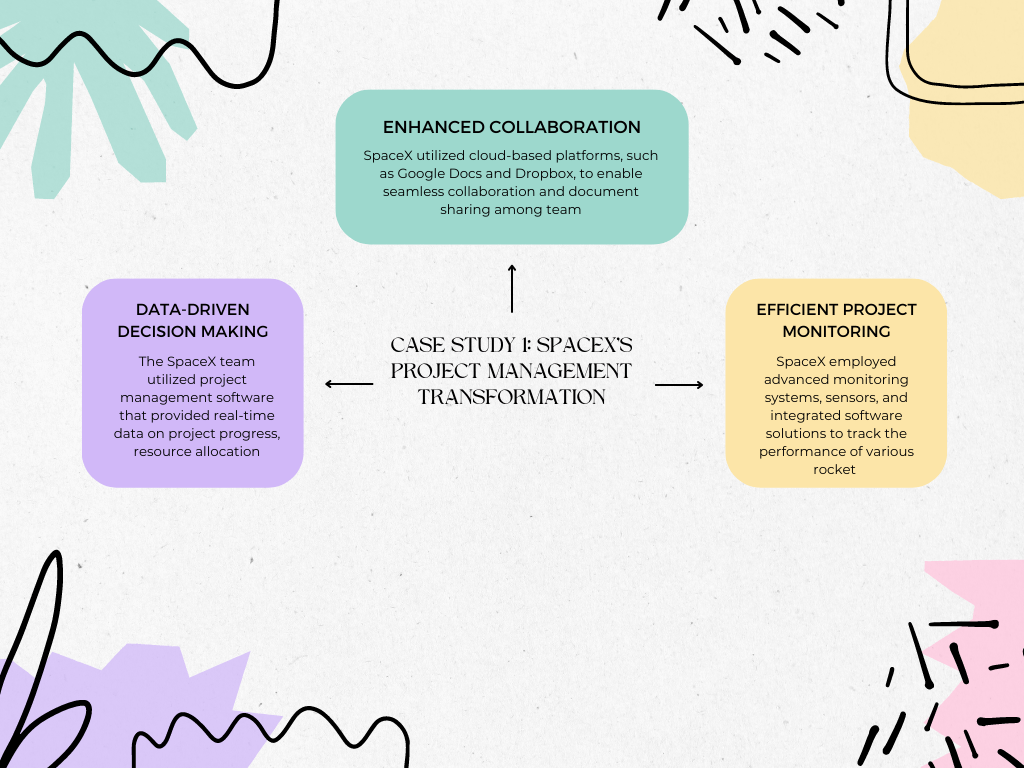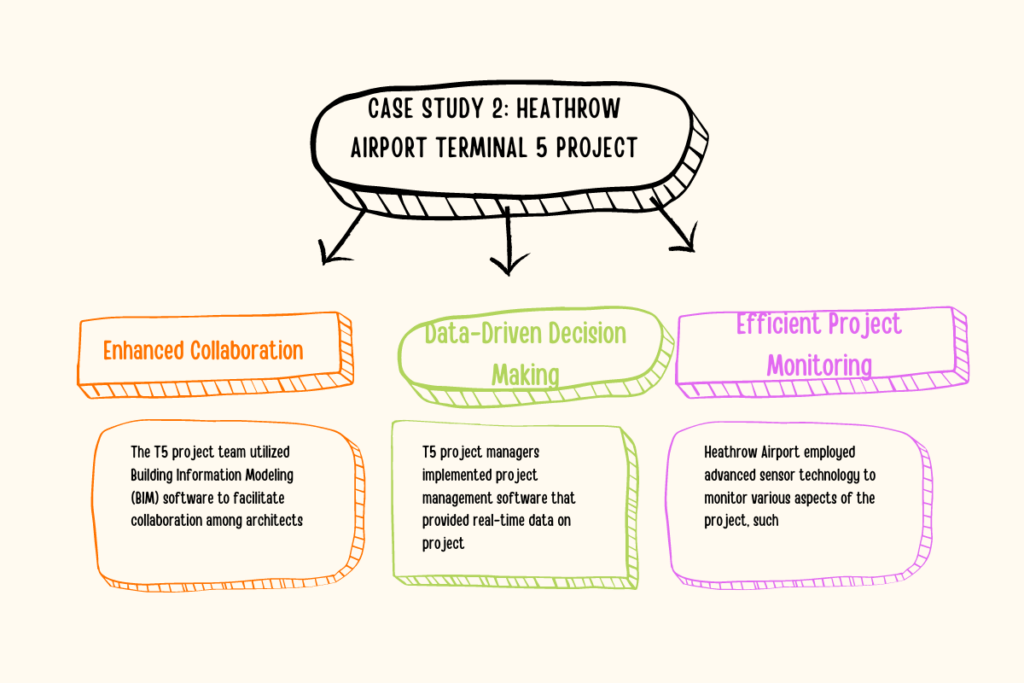What is the role of technology in project management?
Project management has evolved over the years, and technology has played a significant role in this transformation. With the rapid advancements in technology, project managers now have access to various tools and software solutions that enhance their efficiency, streamline processes, and improve overall project success rates. This article explores the crucial role that technology plays in project management, showcasing how it enables better collaboration, data-driven decision-making, and efficient project monitoring.
Enhanced Collaboration
One of the primary benefits of technology in project management is its ability to facilitate seamless collaboration among team members. Cloud-based project management tools, for instance, allow team members to access documents, share information, and collaborate in real-time, regardless of their geographical locations. This transformative capability has eliminated the need for physical meetings and enhanced productivity.
Additionally, communication platforms such as Slack and Microsoft Teams provide a centralized space where team members can discuss project-related matters, ask questions, and exchange ideas. These platforms enable faster communication, reduce miscommunication, and facilitate relationship building among team members. Research studies have demonstrated that effective collaboration positively impacts project success rates by improving communication, increasing teamwork, and enhancing project outcomes.
Data-Driven Decision Making
Technology has revolutionized the availability and analysis of project-related data, providing project managers with valuable insights for decision making. Through project management software, managers can monitor and evaluate various project parameters, such as progress, timelines, and resource allocation. This enables proactive decision-making, timely intervention, and improved resource allocation, ultimately leading to better project outcomes.
Utilizing tools like data visualization software, project managers can present complex project data in an easily understandable format. This helps stakeholders gain a comprehensive overview of the project’s status, identify trends, and make data-driven, informed decisions. Data-driven decision making has been shown to enhance project success rates by minimizing risks, increasing predictability, and improving project outcomes.
Efficient Project Monitoring
With the integration of technology in project management, monitoring and tracking project progress has become more efficient. Project management software features, such as Gantt charts and Kanban boards, enable managers to visualize and track project timelines, milestones, and tasks. This enhances transparency, identifies potential bottlenecks, and allows for timely adjustments to meet project objectives.
Furthermore, technology-driven tools, like project management dashboards, provide real-time project updates and key performance indicators (KPIs). By monitoring KPIs, project managers can easily identify any deviations from the desired outcomes, address them promptly, and ensure project success. Research indicates that efficient project monitoring positively impacts project performance by improving resource utilization, reducing project delays, and enhancing overall project efficiency.
Risk Management
Technology has also transformed the way project managers identify, assess, and mitigate risks. Risk management software offers functionalities like risk identification, analysis, and monitoring, making it easier to create risk matrices and prioritize risks based on their potential impact and probability. These tools enable project managers to develop effective risk mitigation strategies and take proactive measures to minimize the likelihood of risks materializing.
Resource Optimization
Technology aids project managers in optimizing resource allocation and utilization. Project management software provides functionality to track and manage resources effectively, ensuring that the right resources are assigned to the right tasks at the right time. This prevents resource bottlenecks, reduces project delays, and enhances overall project efficiency.
Furthermore, advanced resource management features enable managers to forecast resource needs, identify potential shortages or overages, and make informed decisions regarding resource hiring or outsourcing. By optimizing resource allocation, project managers can maximize productivity, minimize costs, and improve project outcomes.
Documentation and Knowledge Management
Technology has revolutionized the way project documentation and knowledge management are handled. Document collaboration tools and knowledge management platforms allow project teams to capture, store, and share project-related information, ensuring that knowledge is retained within the organization. This prevents knowledge loss due to employee turnover and enables efficient onboarding of new team members.
Moreover, technology-driven document management systems enable version control, document security, and ease of access. These capabilities streamline document workflows, enhance document retrieval and sharing, and ensure compliance with organizational document management policies.
Automation and Efficiency
Automation is a key aspect of technology’s role in project management. Software tools offer automation features for repetitive and time-consuming tasks, such as generating reports, updating project status, and sending reminders. By automating these tasks, project managers can focus more on strategic activities, problem-solving, and decision-making.
Additionally, technology-driven workflows and standardized processes improve project efficiency by eliminating manual errors, reducing rework, and enhancing overall project quality. Data automation and integration capabilities provided by project management software systems enable seamless communication and data transfer among various project management tools and systems.
Stakeholder Engagement
Technology also enhances stakeholder engagement in project management. Stakeholder management software allows project managers to identify stakeholders, assess their expectations, and develop appropriate communication strategies. This ensures that project stakeholders are kept informed, engaged, and satisfied throughout the project lifecycle.
Moreover, collaboration platforms and project portals enable stakeholders to access project information, share feedback, and contribute to project discussions. This fosters a sense of ownership and involvement, leading to improved stakeholder satisfaction, effective decision-making, and ultimately, project success.
Furthermore, the integration of artificial intelligence (AI) and machine learning algorithms in project management software enables automated risk identification and prediction. These algorithms analyze historical project data and identify patterns, allowing project managers to anticipate potential risks and take preventative actions. Research suggests that technology-driven risk management significantly reduces project failure rates by improving risk identification, response planning, and overall project resilience.
What is the role of technology in project management: Case Studies
Case Study 1: SpaceX’s Project Management Transformation
SpaceX, the aerospace manufacturer and space transportation company, is renowned for its innovative approach to project management. One of their key projects, the Falcon Heavy rocket launch, required precise coordination and collaboration among team members, suppliers, and contractors. To achieve this, SpaceX implemented technology-driven project management tools and software solutions:

1. Enhanced Collaboration: SpaceX utilized cloud-based platforms, such as Google Docs and Dropbox, to enable seamless collaboration and document sharing among team members working from different locations. This allowed for real-time updates, version control, and improved communication.
2. Data-Driven Decision Making: The SpaceX team utilized project management software that provided real-time data on project progress, resource allocation, and timelines. By analyzing this data, project managers could make informed decisions to optimize project outcomes and ensure efficiency.
3. Efficient Project Monitoring: SpaceX employed advanced monitoring systems, sensors, and integrated software solutions to track the performance of various rocket components during the launch process. This allowed for real-time monitoring, identification of issues, and timely adjustments to mitigate risks and ensure project success.
The integration of technology in project management played a crucial role in SpaceX’s success with the Falcon Heavy project. It enabled effective collaboration, data-driven decision making, and efficient project monitoring, ultimately contributing to the mission’s successful outcome.
Case Study 2: Heathrow Airport Terminal 5 Project
The construction of Heathrow Airport Terminal 5 (T5) in London, UK, presented numerous challenges in project management due to its complexity and scale. To overcome these challenges, the project management team leveraged advanced technology and software solutions:

1. Enhanced Collaboration: The T5 project team utilized Building Information Modeling (BIM) software to facilitate collaboration among architects, engineers, and contractors. This software enabled the seamless integration of design, construction, and management information, reducing errors, improving communication, and streamlining the construction process.
2. Data-Driven Decision Making: T5 project managers implemented project management software that provided real-time data on project progress, cost estimates, and resource allocation. This data-driven approach allowed for better decision making, anticipating potential risks, and optimizing project performance.
3. Efficient Project Monitoring: Heathrow Airport employed advanced sensor technology to monitor various aspects of the project, such as temperature, humidity, and structural integrity. Real-time data obtained from sensors enabled project managers to detect issues promptly, take corrective actions, and ensure compliance with quality standards.
The adoption of technology-driven project management tools and solutions played a pivotal role in the successful delivery of T5. It facilitated collaboration among stakeholders, enhanced decision making based on real-time data, and allowed for efficient project monitoring, ultimately resulting in the timely completion of the airport terminal.
These case studies demonstrate how technology has been pivotal in transforming project management practices across various industries. By embracing technology, organizations can achieve better collaboration, data-driven decision making, and efficient project monitoring, leading to improved project outcomes and success rates.
Conclusion
The role technology plays in project management cannot be overstated. From enhancing collaboration and enabling data-driven decision-making to efficient project monitoring and facilitating risk management, technology has transformed the way projects are managed. By adopting technology-driven project management tools and software solutions, organizations can improve project success rates, reduce risks, and enhance overall project outcomes. As technology continues to advance, project managers must stay abreast of the latest technological developments to leverage their potential benefits and optimize project performance
Samrat is a Delhi-based MBA from the Indian Institute of Management. He is a Strategy, AI, and Marketing Enthusiast and passionately writes about core and emerging topics in Management studies. Reach out to his LinkedIn for a discussion or follow his Quora Page

